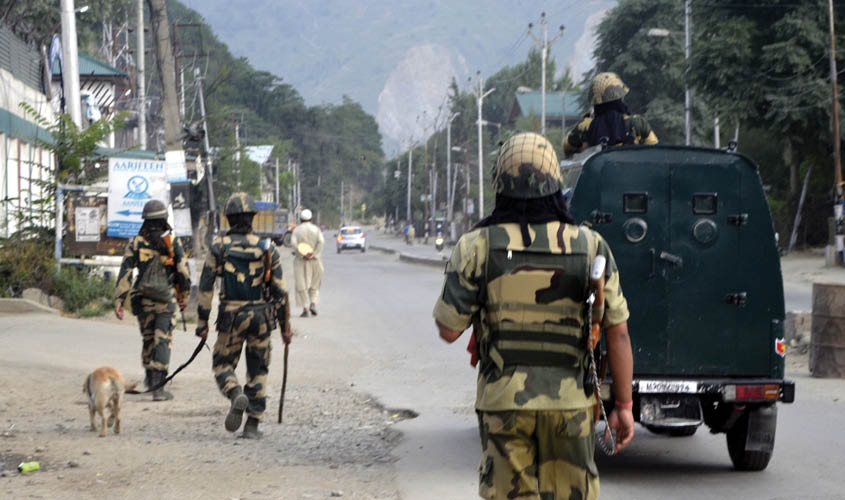New Delhi: The groundwork to remove Indian Constitution’s Article 370, which granted special status to Jammu & Kashmir, started during the first term of the Narendra Modi government, although the actual removal happened on 5 August during his second term as Prime Minister. Intelligence agency sources told The Sunday Guardian that unlike the narrative that some political parties were peddling, removing Article 370 was anything but a hasty decision.
An intelligence officer said: “Even if we wanted to, we could not have done it hastily. It was a well-planned exercise, which was executed step by step. Moving additional forces into the Kashmir valley was the last step. First, the separatist leaders were made irrelevant, then the stone-pelters were subdued, for which we worked very hard by stopping the money flow that these separatists were dependent on to pay these stone-pelters. The National Investigating Agency (NIA) was specifically asked to break the hawala nexus that was operating freely in the valley, because of which the separatists were able to finance the demonstrations. Then, a no-holds-barred policy was followed against those who took up the gun. We gave a clear message that whoever took up the gun would be eliminated. The idea was to make sure that the person who picked up the gun should not be allowed to become a public figure, like many had become in the past. As a result of this policy, over 80% of the terrorists were killed within one month of picking up the gun. The narrative that the gun was the solution was changed. The unfortunate part is that this change could be brought about only by the aggressive use of India’s might as any talk to dissuade them from picking up the gun was not having the required impact. Terrorism in the valley had got associated with some sort of romanticism.”
The security forces killed 960-plus terrorists in the state in the 65-month period starting from January 2014.
Government sources said that de-fanging the separatist leaders, making them inconsequential, was the first and foremost step towards removing Article 370, as these “leaders”, for over 30 years, from the time terrorism first reared its head in the valley, had held the whole of Kashmir to ransom.
An intelligence agency officer, who was posted in the valley until recently, said, “The rule of law in the valley was entirely in the hands of the separatists when the Modi government was elected to power in Delhi in May 2014. These separatist leaders, including the members of the All Parties Hurriyat Conference (APHC), would decide what policy the government would follow when it came to Kashmir. The first step that we took was to make it abundantly clear that they were not the voices of the Kashmiris, as they would claim, but they were a group of lumpen elements who had only nuisance value. It was a long process, as these leaders had firmly entrenched themselves as the face of Kashmir. It took time, but since the decision was already made to make them ineffective, there was no doubt that their time was up.”
To explain the stature that these leaders enjoyed, the officer gave the example of how journalists of national newspapers, who were newly posted in Kashmir, were required to first interview the top leaders of APHC so that they could work in a “congenial” environment.
Another IPS officer, who too served in the valley, explained to The Sunday Guardian that in the initial years the APHC was allowed to flourish by earlier governments as it was thought that they would act as a platform for local Kashmiris to express their resentment. The resentment was understandable, as Kashmiris were living under the shadow of the gun—both of the terrorists and that of the Indian Army.
“It is no secret that these leaders were treated with kid gloves. They received a lot of financial help from us, their children were sent out of India, got admitted in colleges, got good jobs. This would not have been possible if the authorities did not want it to happen. For years, these leaders were treated like the ambassadors of a powerful country. But the new thinking at the Centre, post May 2014, was that these groups and leaders were damaging India’s interests and it was only a matter of time that they would be tackled,” the IPS officer said.
The inkling that “something big” was going to happen in the valley came in the second half of July when troop movement orders and other similar orders relating to the valley started appearing on social media, a forum where it is difficult to track who “leaked” the orders.
Sources said that US President Donald Trump’s remark to Pakistan Prime Minister Imran Khan on 22 July in Washington DC on his willingness to mediate on Kashmir may have brought forward the removal of Article 370. “Pakistan saw Trump’s statement as a success of its Kashmir policy and started believing that with US supporting its stand of making Kashmir an international issue, it could now continue with its policy of using its military and its jihadi groups to target the Indian security forces to the point where India surrendered its resolve not to discuss Kashmir internationally. With Taliban coming into the picture, we had to move quicker than we had thought initially,” a government source claimed to The Sunday Guardian.

